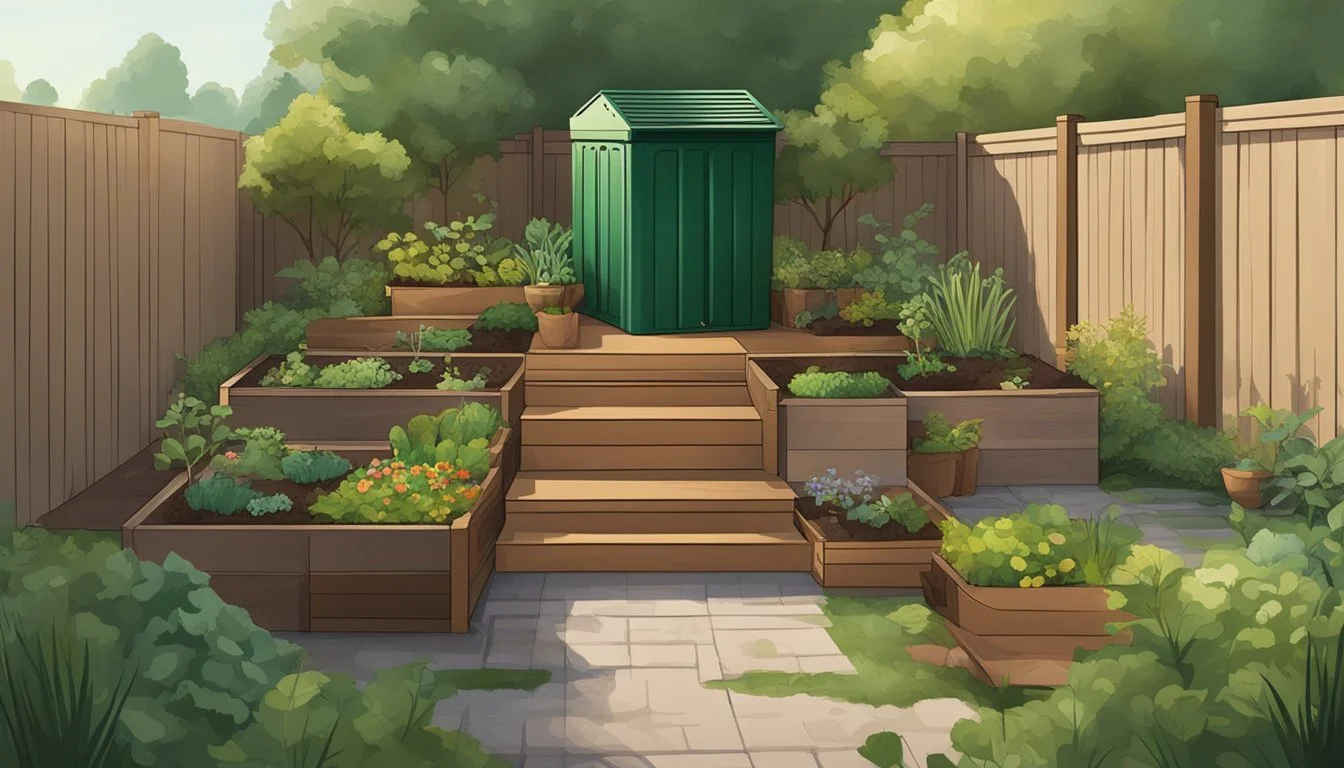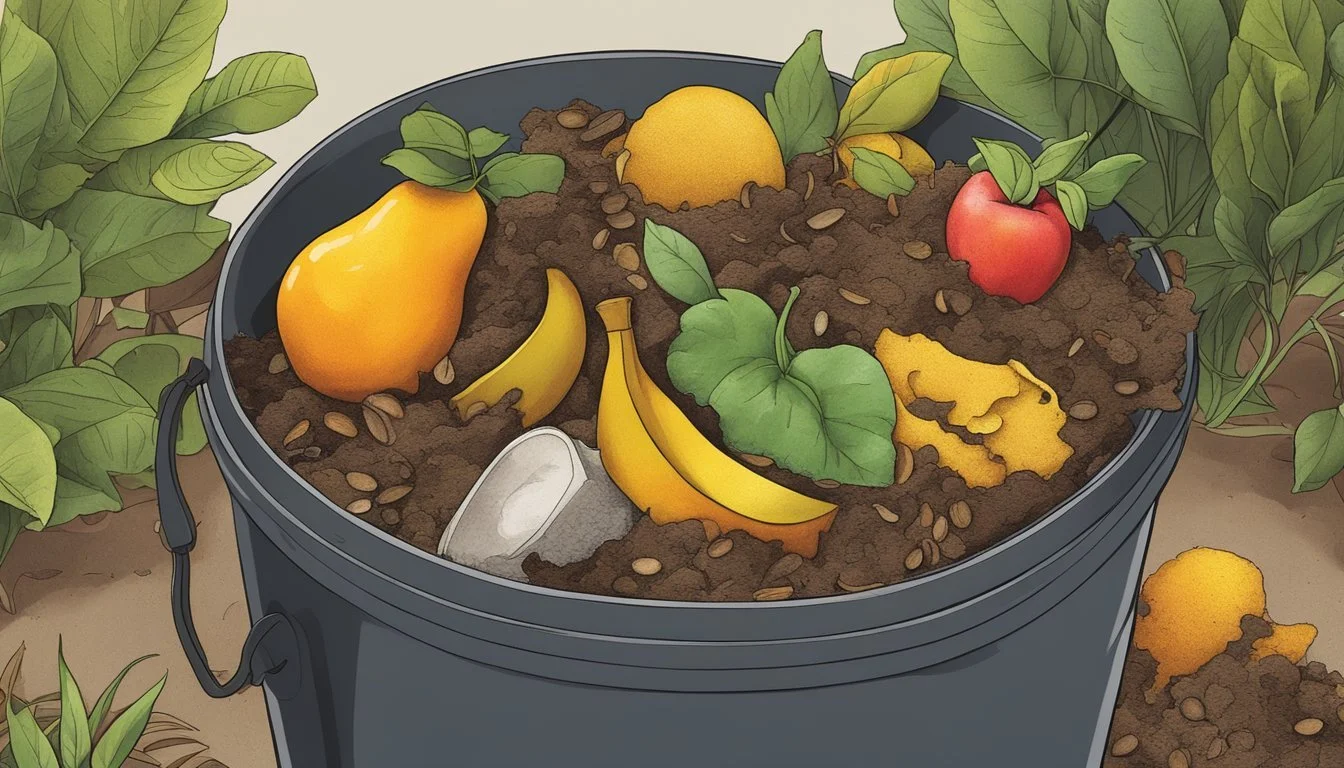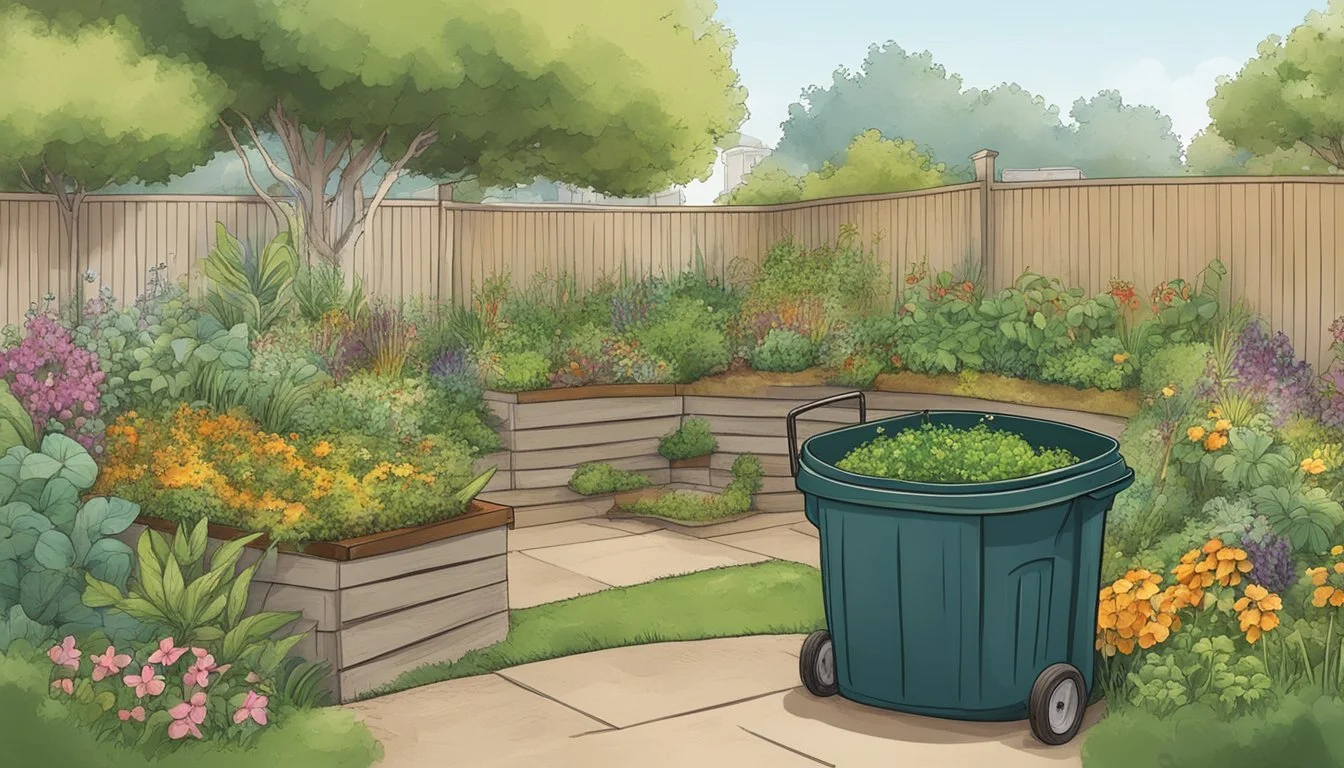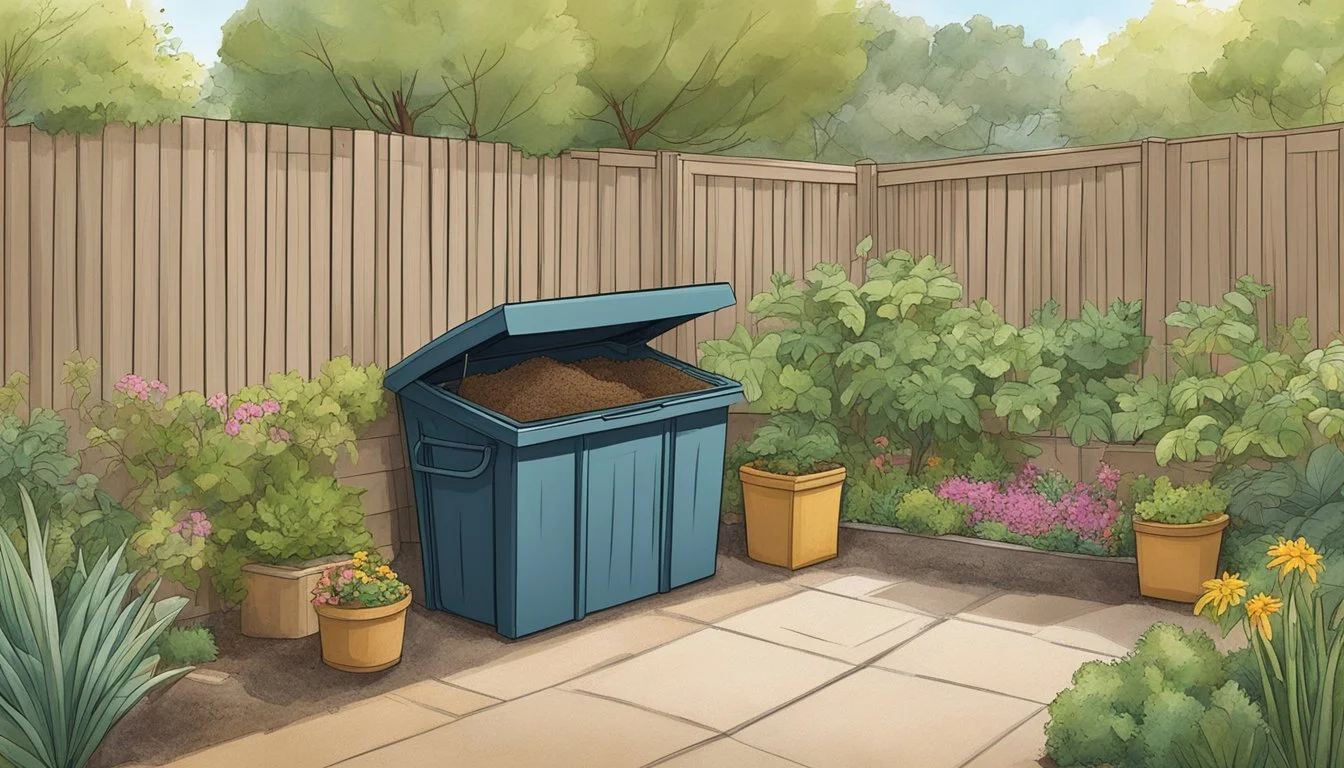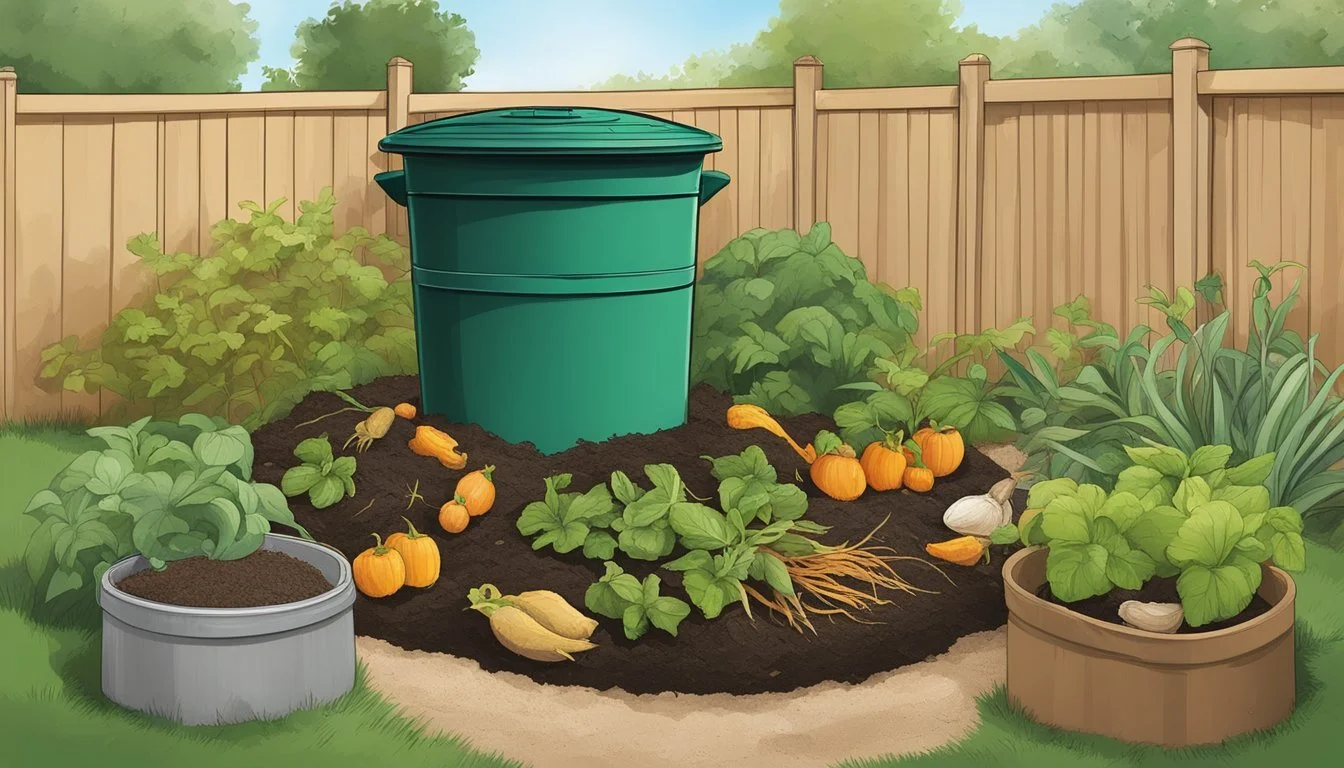Guide to Composting in Costa Mesa, CA
Essential Tips for Efficient Waste Reduction
Composting has become an integral part of waste management in Costa Mesa. This city, known for its forward-thinking sustainability efforts, introduced a residential organics recycling program, positioning itself as a leader in Southern California's push towards environmental stewardship. Residents in Costa Mesa now have the opportunity to contribute to a greener community by diverting organic waste from landfills, where it otherwise emits harmful methane gas, a potent greenhouse gas. Through composting, organic material is broken down to create nutrient-rich soil, which can then be used to improve garden health and structure.
California has been at the forefront of environmental legislation, and the statewide mandate to reduce organic waste reflects this. Costa Mesa aligns with these regulations, offering residents resources and educational materials to streamline the composting process. The benefits of composting extend beyond waste reduction; it also enhances soil water retention, reduces the need for chemical fertilizers, and helps sequester carbon back into the earth. This practice not only recycles organic waste but also plays a crucial role in combating climate change.
The Basics of Composting
Composting is an essential process for transforming organic waste into a nutrient-rich soil amendment. It's a significant step towards sustainability, especially for residents of Costa Mesa, CA, aiming to reduce their carbon footprint and methane emissions.
What Is Composting?
Composting is the natural process of recycling decomposed organic materials into a rich soil known as compost. It involves combining organic waste, such as food scraps and yard waste, with carbon-rich materials and ensuring adequate air flow. Over time, with the help of microorganisms, these materials break down into compost, which can enhance soil health and plant growth.
Ingredients
The key ingredients for a successful compost include:
Nitrogen: This is provided by "greens," like kitchen scraps and garden clippings, which add the essential element for microbial growth.
Carbon: "Browns," such as leaves, twigs, and cardboard, offer carbon, which gives energy to microbes.
Water: The pile should maintain moisture, like that of a wrung-out sponge, to support decomposition.
Air: Oxygen is required for aerobic composting, which speeds up the process and reduces methane production.
Process
The composting process involves four primary stages:
Mesophilic phase: Microorganisms begin to break down the organic material at moderate temperatures.
Thermophilic phase: The pile heats up, eliminating pathogens and weed seeds as thermophilic microbes take over.
Cooling phase: As the nutrients from the initial material are exhausted, temperatures decrease.
Maturation phase: The compost continues to cure until it's ready to use, which can take anywhere from a few months to a couple of years.
Why Compost in Costa Mesa?
Composting in Costa Mesa supports city-wide sustainability efforts. It reduces the amount of organic waste that would otherwise go to landfills, where it decomposes anaerobically, releasing methane, a potent greenhouse gas. Instead, composting turns this waste into a valuable product that can improve soil fertility and structure, increase drought resistance, and reduce the need for chemical fertilizers, bringing environmental benefits to the community gardens and landscapes of Costa Mesa.
Setting up Your Composting System
Setting up a composting system in Costa Mesa involves selecting an appropriate bin, finding the right location, and understanding what materials can be composted effectively.
Choosing the Right Composting Bin
When selecting a composting bin, consider capacity and material. For smaller households, a bin of about 12 cubic feet might be sufficient. There are various types of bins to choose from, such as the tumbling composter which is excellent for easy mixing and aeration. The static bin is another option that requires minimal maintenance. Residents can learn about the starter kit offered by the Costa Mesa Sanitary District's Organics Recycling Program which could include a bin suitable for beginners.
Ideal Location for Composting Bins
The location of a compost bin affects its performance and ease of use. A spot with partial shade will keep the temperature stable while one that has a balance of sun and shade will prevent excess moisture. Ensure the chosen area has good drainage to avoid waterlogging. Proximity to the source of composting materials, like your kitchen or garden, can also be a factor for convenient disposal.
What Can and Cannot Be Composted
It's crucial to know what can be composted to prevent problems like odors and pests. Typically, 'green' materials are rich in nitrogen and include fruit and vegetable scraps, coffee grounds and filters, and tea bags (without the staples). 'Brown' materials provide carbon and include dried leaves, cardboard pieces, and straw. Here is a simplified list:
Compostable:
Fruit and vegetable scraps
Coffee grounds and paper filters
Tea bags (without staples)
Not Compostable:
Meat, dairy, bones, and fish
Grease or oil
Adding meat, dairy, or oily foods can lead to bad odors and attract pests. Accordingly, items such as bones, fish scraps, and grease are best left out. Remember that maintaining a balance between green and brown materials will help regulate moisture and minimize unpleasant odors.
Composting Materials
In Costa Mesa, effective composting calls for a balance of "greens" for nitrogen and "browns" for carbon. These materials accelerate the decomposition process, transforming waste into nutrient-rich soil.
Greens for Composting
"Greens" are nitrogen-rich materials essential for the composting process. They include kitchen scraps like vegetable trimmings, fruit peels, and coffee grounds. Other sources are fresh grass clippings, plant prunings, and flowers. The right amount of greens helps activate the breakdown of organic mater, ensuring efficient composting.
Vegetable scraps: Carrot peels, lettuce, or cucumber ends.
Fruit waste: Apple cores, banana peels, or melon rinds.
Coffee grounds: Leftover from brewing coffee.
Grass clippings: Freshly cut grass from garden maintenance.
Flowers: Expired flowers from vases or floral displays.
Weeds: Weeds that haven't gone to seed.
Browns for Composting
"Browns" provide necessary carbon to the compost mix. These materials include dry leaves, twigs, yard trimmings, and straw. Cardboard, such as unwaxed food boxes, can also be part of the browns in a compost pile. Browns should be added in roughly equal proportions to greens to ensure aeration and prevent foul odors.
Dry leaves: Fallen leaves collected from yards.
Twigs: Small branches and woody stems.
Yard trimmings: Dead plants and dried grass.
Straw: Can be used as a dry additive for additional structure.
Cardboard: Shredded cardboard boxes free from inks and waxes.
By maintaining the balance between these two types of materials, Costa Mesa residents can create an effective composting system that diverts waste from landfills and enhances the health of their gardens.
Composting Process
Composting is an eco-friendly method to recycle organic waste, transforming it into nutrient-rich soil amendment through a controlled biological process. The success of composting hinges upon a delicate balance of brown and green materials, adequate air and water supply, and monitoring of time and temperature.
Layering Your Compost
To commence a compost pile, layering is a fundamental technique. Begin with a layer of brown materials, which are rich in carbon, such as dry leaves, twigs, and cardboard. These materials serve as the pile's foundation. Following this, add a layer of green materials — these are nitrogen-heavy items like grass clippings and vegetable scraps. Alternate between green and brown layers to create a diverse and balanced compost mix.
Maintaining the Right Conditions
For compost to decompose efficiently, maintaining the correct balance of air and water is critical. The pile should be kept moist, akin to a wrung-out sponge, and regular turning introduces air into the system, crucial for aerobic decomposition. Monitoring the temperature of your compost pile is also telling; an ideal range is between 135°F to 160°F, which helps expedite the breakdown process while eliminating unwanted pathogens. As time progresses, these elements work in concert to break down the organic materials into fertile compost.
Troubleshooting Common Issues
When composting in Costa Mesa, CA, some common challenges may arise, such as managing odors, deterring pests, and maintaining proper moisture levels. This section provides straightforward solutions to help you keep your compost system functioning optimally.
Dealing with Odors
Odorous compost is often a sign of an imbalance within the pile. Anaerobic conditions can cause a rotten egg smell, indicating compacted layers that restrict air flow. To mitigate this, one should introduce more brown materials, such as leaves or shredded paper, to absorb excess moisture and reintroduce oxygen. An ammonia odor suggests an excess of nitrogen-rich materials, requiring the addition of more carbon-rich matter to restore balance.
For persistent smells, check for pathogens that could be degrading the compost quality. Regularly turning the pile and ensuring a proper balance will also help prevent foul odors and create an environment hostile to harmful pathogens.
Preventing Pests
Encounters with rats, flies, or other pests can indicate that one has included inappropriate materials, such as meats or oils, in their compost pile. To combat this issue, ensure that all compostable materials are appropriate—and exclude bones, meat, and dairy products. An enclosed system, like a compost tumbler or bin with a secure lid, can serve as an effective barrier against pests.
In addition, apply a layer of soil or dry leaves on the compost's surface to mask the smell and prevent attracting pests. If flies are a concern, consider increasing the carbon-to-nitrogen ratio (Expert Solutions) to reduce the attraction of flies to the pile.
Managing Moisture Levels
Proper moisture is critical for a successful composting process. A compost pile that is too dry may not decompose efficiently, while too much moisture can cause odors and attract pests. The compost should be moist like a wrung-out sponge—this level of dampness is ideal for microbial activity.
If the compost is too wet, add more dry, brown materials and turn the pile to introduce air and distribute moisture evenly. In case of excess dryness, sprinkling water or adding wet food scraps can help increase the moisture content. Compost tea can also be produced from properly maintained compost and can add beneficial microorganisms and nutrients when used as a soil amendment.
Benefits of Composting
Composting offers a dual advantage: it mitigates environmental challenges while simultaneously enriching the soil for gardening. This section explores both environmental and horticultural benefits in Costa Mesa, CA.
Environmental Impact
Composting significantly reduces the amount of organic waste sent to landfills, where it would otherwise decompose anaerobically and release methane, a potent greenhouse gas. The Costa Mesa Sanitary District's Organics Recycling Program highlights an innovative example, where organic materials are not only diverted from landfills but also transformed into compost and renewable natural gas through anaerobic digestion technology. By composting, residents contribute to lowering the area's carbon footprint and conserve valuable resources.
Value for Gardeners
For those passionate about gardening, the value of compost cannot be overstated. Compost acts as a rich soil amendment, bolstering plant growth by improving soil structure, increasing nutrient content, and enhancing moisture retention. According to CalRecycle, making compost allows for the creation of a soil amendment that is not only cost-effective but also a powerful agent in carbon sequestration, helping gardeners to contribute positively to the environment while cultivating their gardens.
Local Guidelines and Resources
In Costa Mesa, CA, residents have access to several composting programs and resources, shaped by local policies and state regulations. Complying with these can help reduce landfill waste and contribute to sustainability.
Costa Mesa Sanitary District Policies
The Costa Mesa Sanitary District (CMSD) initiated an Organics Recycling Program that stands as a pioneer in residential composting efforts within Southern California. Collection days are scheduled regularly, and residents are encouraged to adhere to these for efficient compostable waste management. Non-compliance could lead to fines, ensuring adherence to the district's sustainability goals.
Senate Bill 1383 and CalRecycle
California's Senate Bill 1383 mandates cities, including Costa Mesa, to minimize organic waste. CalRecycle oversees this, requiring Californians to separate compostable materials from other waste. This law extends beyond individual households to commercial businesses and requires detailed monitoring and reporting to meet statewide waste reduction targets.
Community Composting in Orange County
Community-scale composting in Costa Mesa is supported by organizations like LA Compost and entities like Los Angeles County Public Works. These groups foster local composting initiatives and educational resources, providing expertise and support to Californians interested in contributing to composting efforts within their communities.
Advanced Composting Techniques
To achieve optimal results in composting, certain advanced techniques can be employed that harness specific processes and materials. These methods are designed to break down organic matter more efficiently and effectively.
Hot Composting
Hot composting is a method where the pile is constructed to create enough heat to accelerate decomposition and kill pathogens. This is achieved by maintaining a balance between 'green' high-nitrogen materials like vegetable peels and 'brown' carbon-rich materials like dried leaves. The ideal temperature should be between 135-160°F which is monitored by a compost thermometer. Regular turning is required to introduce air and maintain oxygen levels that are essential for aerobic microbes to thrive.
Vermicomposting
In vermicomposting, worms are the star players. They consume organic material, speeding up the decomposition process, and in turn, produce high-quality compost called worm castings. The species typically used is the red wiggler, which thrives in a contained environment with a mixture of greens and browns. The temperature should be kept between 55 and 75°F, essential for the worms' survival. It's an excellent technique for indoor composting and dealing with food scraps like tea and vegetable peels without creating foul odors.
Bokashi Composting
Bokashi composting is a fermentative process using a specific inoculant to breakdown teas, coffee grounds, and kitchen waste, including meats and dairy, which are typically not recommended for other composting methods. This anaerobic process requires a sealed container and time, usually two weeks for the initial fermentation and then further maturation in the soil. Bokashi composting is unique in that it does not produce heat but relies on the breakdown of organic matter through fermentation, resulting in a quicker turnaround time to soil enrichment.
Frequently Asked Questions
When it comes to composting in Costa Mesa, residents often have queries about handling specific types of waste. This section addresses common questions around disposing of citrus peels, composting dairy and meat, and dealing with compostable packaging within the region's organics recycling program.
Can I Compost Citrus Peels?
Citrus peels can be composted. However, they break down slower than other organic materials due to their high acidity and tough skins. It's recommended to cut them into smaller pieces to speed up the composting process. Residents should also balance their compost pile with other green and brown materials to maintain a healthy compost mixture.
How to Compost Dairy and Meat Safely?
Composting dairy products and meat does require special attention due to their potential to attract pests and create odors. The Costa Mesa Sanitary District encourages residents to use a Bokashi bin or a similar anaerobic system specially designed for composting these types of materials. This method ferments the dairy, eggs, and meat, making it safe for later composting.
What To Do With Compostable Packaging?
Compostable packaging, including items like compostable bags, compostable foodware, and food wrappers, should be handled properly. They should be certified as compostable and should not contain any non-organic materials such as glass, metal, or aluminum. These items can typically be included in Costa Mesa's curbside composting program, but it is advisable to consult specifics provided by the Costa Mesa Sanitary District. Non-compostable items like styrofoam, wax, plastic-coated paper products, palm fronds, cardboard, and pet waste should be kept out of compost bins.
Services and Support in Costa Mesa
Costa Mesa provides comprehensive composting services and educational programs to its residents. These efforts are especially important as communities across California adapt to new waste management regulations.
Public Compost Education Programs
The Costa Mesa Sanitary District offers pioneering programs in organics recycling as part of a wider educational initiative. They lead the charge by providing resources and guidance for separating organic materials from regular waste. These programs are essential for the success of food waste pickup services and affect cities across Orange County including Anaheim, Fullerton, and Santa Ana.
Through workshops and outreach, residents learn how to properly dispose of various organic waste, which may include oils and bones from meat and fish. By fostering a culture of recycling, the District helps reduce the amount of waste sent to landfills.
Household Hazardous Waste Disposal
For proper disposal of potentially dangerous substances, Costa Mesa encourages its citizens to use designated disposal facilities for household hazardous waste. Items like motor oils, batteries, paint, and chemicals that pose a risk to the environment are not to be included with regular trash or recycling to prevent pollution and maintain public health.
Residents may utilize the services provided at a local Household Hazardous Waste Collection Center to ensure safe and environmentally friendly disposal. These centers are equipped to handle a variety of hazardous materials and are a key component in maintaining the ecological integrity of Costa Mesa and its surroundings.
Conclusion
In Costa Mesa, CA, residents have embraced composting as a key contributor to sustainability and waste reduction. This environmentally-conscious community understands the benefits of composting, which include reducing landfill waste and creating nutrient-rich soil.
Sustainability: Composting turns organic waste into valuable compost, helping to close the loop in the waste management system.
Community Involvement: Collaborative efforts increase awareness and participation, leading to a healthier environment.
For Californians in Costa Mesa, the organics recycling program provides an easy and effective means of composting. Individuals can contribute food scraps and yard trimmings, knowing they are actively participating in an initiative that enriches soil health and conserves resources.
Residents should be clear on what can and cannot be composted. Acceptable items include:
Food Scraps: Fruits, vegetables, coffee grounds.
Yard Trimmings: Leaves, grass, branches.
By incorporating simple practices into everyday routines, they are making a long-term investment in the wellbeing of their community and planet. The efforts made by the Costa Mesa Sanitary District to implement curbside collection for organics recycling stand as a testament to the potential for positive change through communal action.

